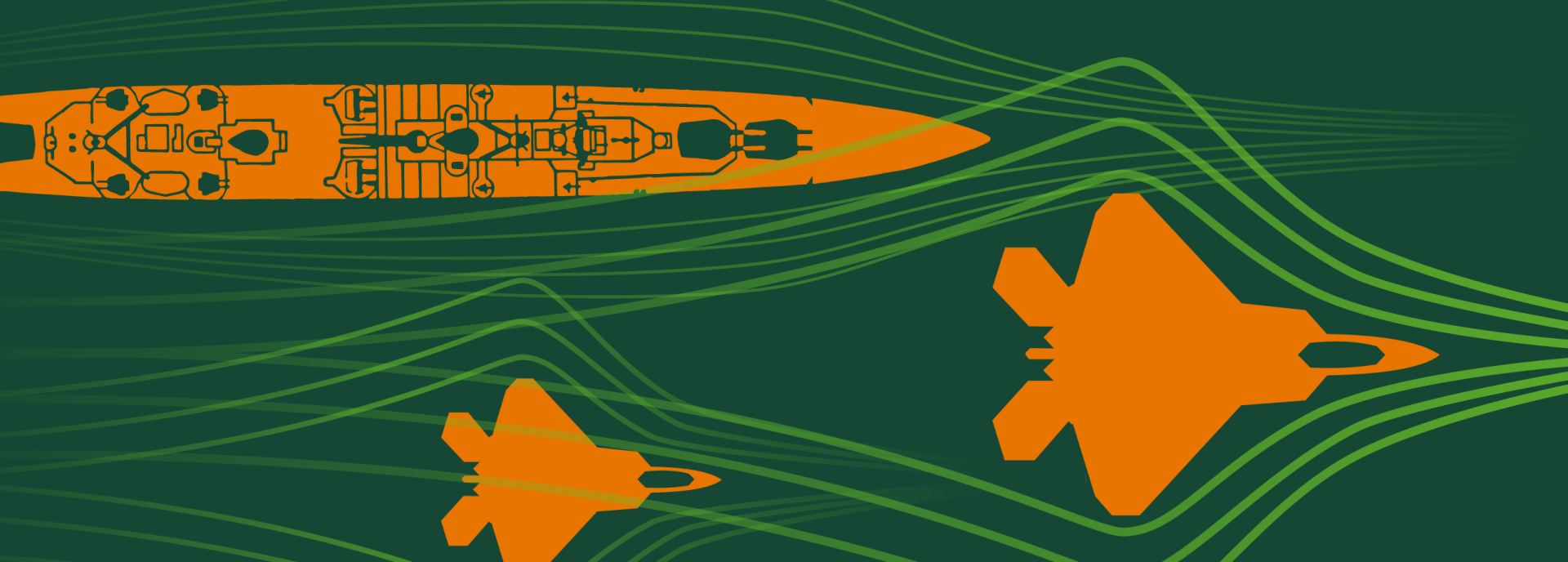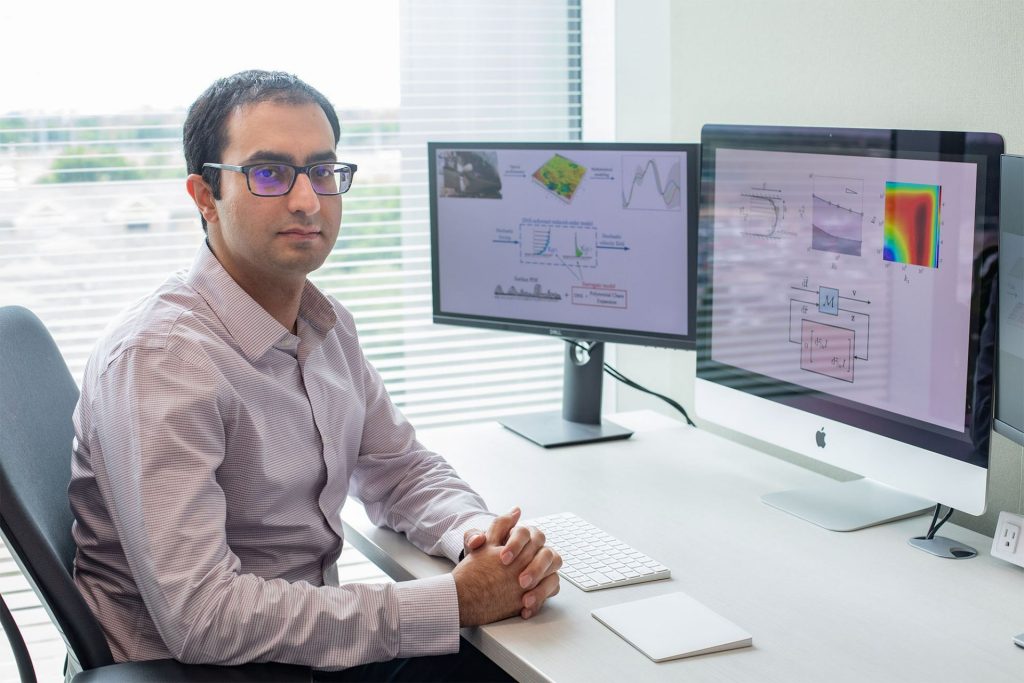
Engineer Earns Grant To Study Surface Roughness on Aircraft, Ships

Dr. Armin Zare has been awarded a three-year grant from the Air Force Office of Scientific Research Young Investigator Program to develop mathematical models that enable simpler, faster evaluation of surface roughness.
Random rough or uneven surfaces that develop on airplanes or ships can create disturbances in air or water flow that impact fuel efficiency, performance and safety. Yet, after decades of research, it is still not possible to predict these effects without performing expensive computer simulations and experiments.
Dr. Armin Zare, assistant professor of mechanical engineering in the Erik Jonsson School of Engineering and Computer Science at The University of Texas at Dallas, has been awarded a three-year federal grant to develop mathematical models that enable simpler, faster evaluation of surface roughness. The research could help manufacturers and operators make decisions about the design, cleaning and repair of engineered surfaces.
The funding from the Air Force Office of Scientific Research (AFOSR) Young Investigator Program supports early career academic scientists and engineers who have received their doctorate in the past seven years and who show exceptional ability and promise for conducting basic research of military interest.
The surfaces of aircraft and ships can become rough or uneven due to manufacturing imperfections or high pressure, high temperature or high humidity conditions experienced under deployment. Rough surfaces cause smooth-flowing air or water around a craft to transition to disturbed or turbulent flow, thus impairing aerodynamics.
Zare, who joined UT Dallas in 2019, aims to combine statistical learning and systems theory, which uses statistics to make predictions, to provide laptop-based tools that can analyze the effects of surface roughness on air or water flow around a craft. Mathematically, air flow is modeled as a fluid.
“The goal is to bring these kinds of tools into the decision-making process to inform early stages of design or to detect locations across the surfaces of aircraft and ships that require repair, cleaning or painting.”
Dr. Armin Zare
Assistant professor of mechanical engineering in the Erik Jonsson School of Engineering and Computer Science
“Images that are taken from different parts of a ship by maintenance crew can be used to generate a mathematical model of the roughness features that can be sources of uncertainty,” Zare said. “When accurately modeled, it is this uncertainty that captures the richness of the surface texture in our simplified models of the fluid dynamics surrounding the vehicle.”
To model uncertainty, Zare adopts a statistical approach that uses data and accounts for unknown factors in making predictions. The method works similarly to opinion polls: In the same way that a poll based on a sample can predict the behavior of a population, a stochastic uncertainty model of the geometric attributes of roughness can make predictions about the surface of an entire aircraft or sea vessel based on sampled surface scans. This approach bypasses the need for extensive, time-consuming simulations and experiments that may require supercomputers.
The new funding will help Zare’s research group build upon earlier work in stochastic dynamical modeling.
“The goal is to bring these kinds of tools into the decision-making process to inform early stages of design or to detect locations across the surfaces of aircraft and ships that require repair, cleaning or painting,” Zare said.
Gregg Abate, AFOSR program manager, said Zare’s research is an area of great interest to the Air Force.
“The research of Professor Zare will provide much needed insight into the complex interaction of turbulent flows with surfaces that have random roughness,” Abate said. “This will allow for insights into developing bespoke surface texturing with potentially lower skin friction drag and the development of engineering models for future air vehicle concepts.”
The technology could be especially critical for high-speed, high-performance military aircraft, Zare said.
“The higher the speed, the more difficult it can be to model the effect of roughness. The aerothermodynamic loading of supersonic and hypersonic vehicles can be substantially impacted by the slightest change to their surface that may trigger laminar-turbulent transition,” Zare said. “If not properly accounted for, such changes can reduce performance of aircraft in critical flight conditions and even drastically impact their safety.”